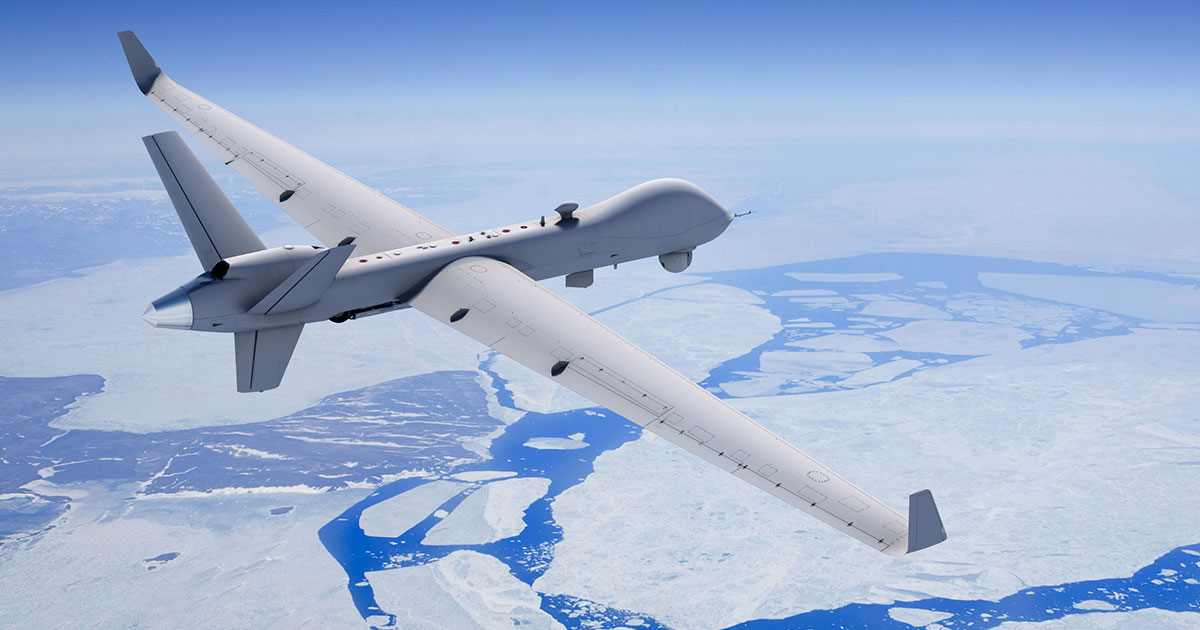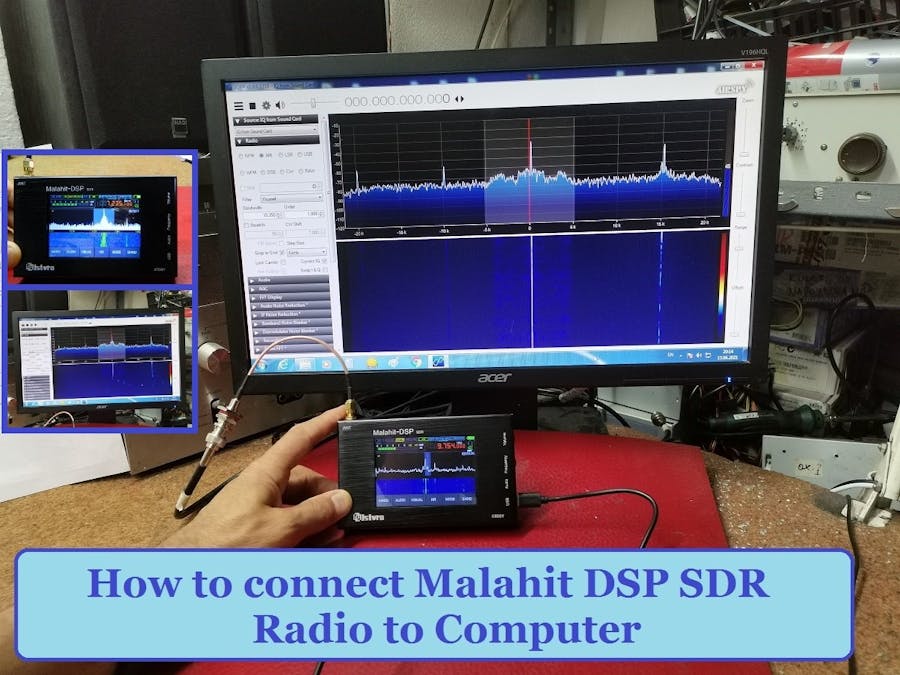The
lowest audible SPL for a human diver with normal hearing is about 67 dB
re 1 μPa, with greatest sensitivity occurring at frequencies around 1
kHz (Fothergill et al., 2001).
Dolphins
and other toothed whales are renowned for their acute hearing
sensitivity, especially in the frequency range 5 to 50 kHz (Mooney et al., 2009).
Several species have hearing thresholds between 30 and 50 dB re 1 μPa
in this frequency range. For example the hearing threshold of the killer
whale occurs at an rms acoustic pressure of 0.02 mPa (and frequency 15
KHz), corresponding to an SPL threshold of 26 dB re 1 μPa (Simon et al., 2005).
By comparison the most sensitive fish is the soldier fish, whose
threshold is 0.32 mPa (50 dB re 1 μPa) at 1.3 kHz, whereas the lobster
has a hearing threshold of 1.3 Pa at 70 Hz (122 dB re 1 μPa) (Patek & Oakley 2003).
It’s
evident as high levels of underwater sound create a potential hazard to
marine and amphibious animals as well as to human divers (Steevens et al., 1999).
Recently, for these reasons, guidelines for exposure of human divers
and marine mammals to underwater sound are reported by different
organizations: human divers exposed to SPL above 154 dB re 1 μPa in the
frequency range 0.6 to 2.5 kHz are reported to experience changes in
their heart rate or breathing frequency, diver aversion to low frequency
sound is dependent upon sound pressure level and center frequency
(Fothergill et al., 2009; Steevens et al., 1999).
The
potential for active sonar to impact on a species is dependent on the
ability of the species to hear the sound. Species hear sounds over
different frequencies ranges, and the efficiency of sound detection
varies markedly with frequency. Additionally, species behavioural
responses to a detected sound may vary according to the sensitivity of
the species to disturbance and what activities the animals are engaged
in at the time.
Determination of potential impact on a species
must therefore include estimation of the ability of the species to
detect the sound, and the likelihood of disturbance to critical
activities such as feeding or parental protection of juveniles.
5.1. Effect of sonar on marine animals
In
terrestrial habitats, increasing sound levels have been shown to induce
various effects across taxa including behavioural changes, temporary
physiological alterations and permanent anatomical damage. While it is
apparent that anthropogenic noise may affect marine animals, we know
relatively less about the actual causes or mechanisms of these effects.
We
can usually see things that are miles away, but if you have ever
snorkelled, you know that vision is limited to a few tens of meters
underwater. Vision is the best way to sense distant objects in air, but
sound is the best way to sense objects that are far away under the sea.
Low frequency sounds can travel hundreds of miles in the right
conditions. When mammals entered the ocean tens of millions of years
ago, they evolved mechanisms to sense objects by listening for echoes
from their own sounds, and to use sound to communicate over long
distances.
Modern ships generate enough noise from their engines
and propellers to have reduced the range over which whales can
communicate. The low frequency noise from ships travels so well in the
ocean that it has raised the noise levels ten to one hundred times
compared to a century ago (Stocker, 2004).
Marine
mammals are of particular concern regarding the effects of noise as
they typically have sensitive underwater hearing and they use sound for
important activities such as communicating, orienting and finding prey.
It
has been suggested that overexposure to noise could induce permanent
physiological damage and deleterious behavioural alterations. For these
reasons: there has been growing concern that the noise humans have
introduced into the sea might disrupt the behaviour of marine mammals (Salami et al., 2010).
Some
marine animals, such as whales and dolphins, use echolocation systems
similar to active sonar to locate predators and prey. It is feared that
sonar transmitters could confuse these animals and cause them to lose
their way, perhaps preventing them from feeding and mating. Recent
articles report findings to the effect that military sonar may be
inducing some whales to experience decompression sickness (and resultant
beachings) (Parsons et al., 2008).
These
temporally and spatially overlapping events seem to indicate that
high-intensity sonar may instigate some marine mammal strandings. Recent
work has suggested that sonar exposure could induce a variety of
effects in marine mammals including changes in dive profile,
acoustically induced bubble formation or decompression sickness (Salami et al., 2010).
High-powered
sonar transmitters can kill marine animals. In the Bahamas in 2000, a
trial by the US Navy of a 230 decibel transmitter in the frequency range
3 to 7 kHz resulted in the beaching of sixteen whales, seven of which
were found dead. The Navy accepted blame in a report published in the
Boston Globe on 1/1/2002. Continued emission of noise can increase the
damage, due to the “habituation” to a familiar sound to which it is
difficult to react more strongly (Sypin, 2008).
The “habituation” is known as being provoked by continued acoustical
stimuli, reducing the hearing sensitivity to high-level sounds; the
hearing sensitivity may be regulated at both conductive (stapedial
reflex) and sensorineural levels (adaptation) (Sypin, 2008).
However,
these hypotheses typically lack controlled experimental conditions to
best evaluate potentially deleterious noise effects. Thus, the actual
mechanisms that may be initiated by sonar exposure, which could actually
result in multi-species strandings, have yet to be empirically
supported.
Introduction of new types of military sonar, such as
low-frequency system, should proceed with caution; the low-frequency
sounds produced by the systems will travel much farther than the
mid-frequency sonar sounds currently causing concern (Salami et al., 2010). However, at low powers, sonar can protect marine mammals against collisions with ships.
Different studies pointed out that the possible effects of the low-frequency sonar on marine mammals could include (Simmonds & Lopez-Jurado, 1991):
Death from lung hemorrhage or other tissue trauma;
Temporary or permanent hearing loss or impairment;
Disruption
of feeding, breeding, nursing, acoustic communication and sensing, or
other vital behavior and, if the disruption is severe, frequent, or long
lasting, possible decreases in individual survival and productivity and
corresponding decreases in population size and productivity;
Psychological and physiological stress, making animals more vulnerable to disease, parasites and predation;
Changes
in the distribution, abundance, or productivity of important marine
mammal prey species and subsequent decreases in both individual marine
mammal survival and productivity and in population size and
productivity. These changes in prey species possibly could be caused
both directly and indirectly by the low-frequency sonar transmissions:
for example, transmissions conceivably could kill or impair development
of the eggs and larval forms of one or more important marine mammal prey
species; they might also disrupt feeding, spawning, and other vital
functions or cause shifts in distribution patterns of certain important
prey species and make some prey species more vulnerable to disease,
parasites, and being eaten by other predators.
Although
these evidences, recent studies showed the absence of side effects on
marine animals: the sensory tissue of the inner ears did not show
morphological damage even several days post-sound exposure; similarly,
gross- and histopathology observations demonstrated no effects on
nonauditory tissues (Popper et al., 2007).
The
exposure to high frequency sonar (200-214 dB re 1 μPa) can determinate
an hearing shifts of the marine animal: in particular recent report show
as these data also imply that the animal must be very close to the
source and/or exposed repeatedly in a short period time (Mooney et al., 2009):
Assuming
a usual sound attenuation rate of 6 dB per doubling of distance, the dB
level used in high frequency sonar would be the received level
approximately 40 m from the sonar source, a distance that can be
considered ‘close’ with respect to naval ships;
The
animal would then have to maintain at most that distance for the
approximate 2–2.5 min of operating the sonar to receive a level of
exposure of near 214 dB;
The animal could be located closer to the sonar source and receive a more intense signal.
However,
the animal would still need to remain within a close range long enough
to receive al level of exposure that would induce auditory threshold
shifts, a potentially unlikely situation: all scenarios entail the
subject being relatively close to the sonar source for a ‘prolonged’
duration (Mooney et al., 2009).
Exceptions
may be if the sonar signals are rapidly repeated (which is unlikely due
to overlap of returning echoes) or if oceanographic conditions are such
that sound levels do not attenuate regularly over short distances (i.e.
less than several 100 m) and thus remain intense. Perhaps such a
situation could occur with multiple sonar sources over steep bathymetric
conditions (Mooney et al., 2009).
These
data show as repeated exposures are necessary to generate effects. It’s
evident as the effects of sound on marine animals could potentially
include increased stress, damage to organs, the circulatory and nervous
systems; long-term effects may alter feeding and reproductive patterns
in a way that could affect the fish population as a whole. In the
limited existing research on the effects of sound on marine animals
hearing and behavior, different scientists have discovered that exposure
to some very loud sounds, such as seismic air guns, can produce no
effect, or result in a range of effects from temporary hearing loss to
more lasting damage to the haircells of marine animal' inner ears. But
it is hard to say that effects on one species indicate that another
species will be affected in the same way by the same signal.
Furthermore,
subtle behavioural changes are also associated with sonar exposure.
Animals that prolong apnea must optimize the size and use of their
oxygen stores, and must deal with the accumulation of lactic acid if
they rely upon anaerobic metabolism (Popper et al., 2007).
Pathologies
related to effects of pressure are well known among human divers, but
marine mammals appear to have developed adaptations to avoid most
mechanical and physiological effect. The hazard of bubble formation
during decompression is best known for humans breathing compressed
gases, but empirical studies and theoretical considerations have shown
that breath-hold divers can develop supersaturation and possible
decompression-related problems when they return to the surface.
Supersaturation has not been measured during normal diving behaviour of
wild marine mammals but rather in specially designed experiments
performed by trained subjects (Tyack, 2006).
Recent reports show the presence of gas and fat emboli in marine animals during exposure to naval sonar (Tyack, 2006).These
reports suggest that exposure to sonar sounds may cause a
decompression-like syndrome in deep-diving whales either by changing
their normal diving behaviour or by a direct acoustic effect that
triggers bubble growth (Tyack, 2006).
The latter scenario would, however, only seem to happen for animals
with 100–223% supersaturated tissues within tens of meters from a sonar
where the received levels exceed 210 dB re 1 μPa (Tyack, 2006).
Nonetheless, the geographical pattern of strandings suggests that
animals are impacted at ranges significantly greater than those required
for acoustically driven bubble growth, implying that the observed
pathologies may follow from a behavioural response that has adverse
physiological consequences (Tyack, 2006).
In
order to further understand these pathophysiological mechanisms, recent
experiences examined post-mortem and studied histopathologically
different marine animals (Ziphius cavirostris, Mesoplodon densirostris
and Mesoplodon europaeus) after exposure to midfrequency sonar activity:
no inflammatory or neoplastic processes were noted, and no pathogens
were identified. Macroscopically, whales had severe, diffuse congestion
and haemorrhage, especially around the acoustic jaw fat, ears, brain,
and kidneys. Gas bubble-associated lesions and fat embolism were
observed in the vessels and parenchyma of vital organs. In vivo bubble
formation associated with sonar exposure that may have been exacerbated
by modified diving behaviour caused nitrogen supersaturation above a
threshold value normally tolerated by the tissues (as occurs in
decompression sickness). Alternatively, the effect that sonar has on
tissues that have been supersaturated with nitrogen gas could be such
that it lowers the threshold for the expansion of in vivo bubble
precursors (gas nuclei). Exclusively or in combination, these mechanisms
may enhance and maintain bubble growth or initiate embolism. Severely
injured whales died or became stranded and died due to cardiovascular
collapse during beaching. These injures are apparently induced by
exposure to mid-frequency sonar signals and particularly affects deep,
long-duration, repetitive-diving species like whales (Fernández et al., 2005).
5.2. Effects of sonar on human hearing
Relying
on one’s hearing it is extremely difficult to orientate oneself under
water. Because of the high speed of sound under water, it is perceived
by both ears virtually simultaneously and the orientation error may be
possible. Bad orientation under water is also due to the prevalent bone
conductivity. Sufficient audial orientation is possible to be acquired
only after systematic training. The diving suit isolates the human ear
from the surrounding water medium. That is why sound waves penetrate the
helmet and the layer of air but reach the eardrum partly absorbed and
scattered. In this case, sound perception through air conductivity is
insignificant.
However, while diving without a helmet, which is
possible in warm water, sound is perceived just like in the air. If the
rubber helmet fits tightly, sound is well perceived because of bone
conductivity – sound waves are transmitted through the bones of the
human skull. With no helmet, a diver can hear very well, with a rubber
helmet – fairly well, and with a metal one – very bad.
The development of underwater technology commonly results in a noisy working environment for commercial divers (Tindle & Deane, 2005).
Also, the increasing use of active low-frequency sonar by submarines
and ships raises the risk of accidental exposure to low frequency
underwater sounds. While hearing conservation programs based on
recognized risks from measurable sound pressure levels exist to prevent
occupational hearing loss for most normal working environments, there
are no equivalent guidelines for noise exposure underwater.
The
Threshold Limit Values (TLVs) represent conditions under which it is
believed that nearly all workers may be repeatedly exposed without
adverse effect on their ability to hear and understand normal speech.
For Threshold Limit - Ceiling Values (TLV-C) the concentration should
not be exceeded during any part of the working day (ACGIH, 1998).
In
particular the “American Conference of Governmental Industrial
Hygienists (ACGIH)” has established permissible ultrasound exposure
levels. These recommended limits (set at the middle frequencies of the
one-third octave bands from 10 kHz to 50 kHz) are designed to prevent
possible hearing loss caused by the subharmonics of the set frequencies,
rather than the ultrasonic sound itself. These TLVs represent
conditions under which it is believed that nearly all workers may be
repeatedly exposed without adverse effect on their ability to hear and
understand normal speech. Previous TLVs for frequencies in the 10 kHz to
20 kHz range, set to prevent subjective effects, are referenced in a
cautionary note below. The 8-hour time-weighted average (TWA) values are
an extension of the TLVs for noise, which is an 8-hour TWA of 85 dBA
for sound below 10 kHz. The ceiling values may be verified by using an
integrating sound level meter with slow detection and 1/3 octave bands.
All instrumentation should have adequate frequency response and should
meet the specifications of ANSI S1.4-1983 and International
Electrotechnical Commission (IEC) 804 (ACGIH, 1998).
Measuring
any source suspected of producing sound at levels exceeding the ACGIH
recommended limits requires the use of a precision sound level meter,
equipped with a suitable microphone of adequate frequency response, and a
portable third-octave filter set. Consult with the Assistant Regional
Administrator for Technical Support for guidance (ACGIH, 1998).
| TVLs for Ultrasound |
| One-third Octave-Band Level |
Measure in Air in dB
Re:20 μ Pa; Head in Air | Measure in Water in dB
Re:20 μ Pa; Head in Water |
| Mid-Frequency ofThird-Octave Band (kHz) | CeilingValues | 8-hour TWA | Ceiling Values |
| 10 | 105A | 88A | 167 |
| 12.5 | 105A | 89A | 167 |
| 16 | 105A | 92A | 167 |
| 20 | 105A | 94A | 167 |
| 25 | 110B | -- | 172 |
| 31.5 | 115B | -- | 177 |
| 40 | 115B | -- | 177 |
| 50 | 115B | -- | 177 |
| 63 | 115B | -- | 177 |
| 80 | 115B | -- | 177 |
| 100 | 115B | -- | 177 |
Table 1.
Different
studies highlighted as behavioural and memory disturbances,
intellectual impairment, depression, and other long-term
neuropsychiatric changes are well known in professional divers: these
symptoms are probably caused by repeated focal ischemia due to
intravascular gas bubbles and hyalinosis of the walls of small blood
vessels (Reul et al., 1995). The lesions were predominantly in the subcortical white matter and basal ganglia, suggesting a vascular pathogenesis (Reul et al., 1995).
Other
studies highlight as diving puts the inner ear at risk. Inner ear
barotrauma and inner ear decompression can lead to permanent
sensorineural hearing loss, tinnitus and vertigo (Klingmann et al., 2004).
Inner
ear barotrauma is related to pressure changes in the middle and inner
ear. Barotrauma refers to tissue damage that occurs when a gas-filled
body space (e.g., lungs, middle ear) fails to equalize its internal
pressure to accommodate changes in ambient pressure. The behaviour of
gasses at depth is governed by Boyle’s law: the volume of a gas varies
inversely with pressure. During descent, as ambient pressure increases,
the volume of gas-filled spaces decreases unless internal pressure is
equalized. If the pressure is not equalized by a larger volume of gas,
the space will be filled by tissue engorged with fluid and blood. This
process underlies the common “squeezes” of descent that affect the
middle ear, external auditory canal, mask, sinuses and teeth. Barotrauma
of the inner ear during descent develops when middle ear clearing fails
and the eustachian tube is blocked and locked (Klingmann et al., 2004).
Under these conditions, the raised intracranial pressure brought about
by forceful efforts to equalize pressure might be transmitted to the
inner ear through a patent cochlear aqueduct. These pressure forces may
cause rupture of Reissner’s or the basilar membrane and/or labyrinthine
window fistula with consequent impairment of inner ear functions (Klingmann et al., 2004).
Symptoms often occur during ascent when expanding air in the middle ear
is forced through a round window membrane fistula into the inner ear.
The resulting gas bubble in the labyrinth expands during ascent and
replaces the perilymph fluids. Barotrauma of the inner ear during ascent
is a result of a blocked eustachian tube with air expanding in the
middle ear forcing the tympanic membrane into the auditory canal. As a
result, the oval window membrane is dislocated into the middle ear and
the round window membrane is forced into the inner ear with increasing
tension on both membranes (Klingmann et al., 2004).
When there is an abrupt pressure equalization, either because of a
tympanic membrane rupture or because the blocked eustachian tube
releases the increased middle ear pressure, the oval and round window
membranes snap back to their original position causing a pressure wave
running through the inner ear.
Whether uneventful scuba diving in
the absence of a decompression incident is a risk factor for cochlear
disorders is a matter of debate. Most studies of diving associated
hearing loss reveal an association with occupational noise exposure.
Different
reports showed as divers exposed to high levels of underwater sound can
suffer from dizziness, hearing damage, somnolence, lightheadedness
inability to concentrate or other injuries to other sensitive organs,
depending on the frequency and intensity of the sound. This may include
neurological symptoms such as blurred vision, lightheadedness, vibratory
sensations in hands, arms and legs, and tremors in upper extremities
(Fothergill et al., 2009; Steevens et al., 1999).
Most
reports of diving injury have concentrated on acute injuries rather
than chronic disability e.g. deafness. Hence, while many divers reported
aural symptoms, few attributed them to diving. It is possible that
repeated hyperbaric exposure among very experienced divers may be
responsible for their aural symptoms, despite the lack of an obvious
acute injury for many. The cause(s) of the aural disorders described
above are unknown. Different authors have reported that hearing loss in
divers may be due to external ear canal obstruction, tympanic membrane
perforation, middle ear disorders and sensorineural hearing damage (Taylor et al., 2006).
However, aural barotrauma is the most likely cause (as it is a
relatively common occurrence). It is known that the strain exerted upon
the tympanic membrane (TM) and middle ear from minor barotrauma results
in reversible impairment of the recoiling capacity of the TM elastic
fibrils. It has been postulated that, if this barotrauma is repeated
over lengthy periods, the TM changes could become irreversible (Taylor et al., 2006). Hence, hearing loss is a possible outcome (Taylor et al., 2006).
Sub-clinical
brain and inner ear injury may offer an alternative explanation.
Different authors found that divers had significantly more hyper-intense
lesions of the sub-cortical cerebral white matter (on MRI) compared to
controls (Taylor et al., 2006):
these authors concluded that long term recreational diving may cause
central nervous system degeneration even if diving incidents have not
occurred. The exact mechanism of this degeneration remains unclear
although paradoxical gas embolism, through a patent foramen ovale, has
been postulated (Taylor et al., 2006).
However,
the association between diving and hearing loss, in the absence of
clinically apparent diving injury, may not be as clear cut. Therefore,
the effect of acoustic trauma or potential harmful effects of increased
pressure and partial pressures of breathing gases cannot be
differentiated. In fact the following well-recognized factors can affect
the inner ear in divers: inner ear decompression sickness, noise, and
potentially chronic effects of the breathing gases.
A number of studies have compared the hearing threshold in professional divers (Klingmann et al., 2004):
In
1961 in a group of 62 Royal Navy divers and submarine escape training
instructors, a high-frequency hearing loss was found in most of the
divers. However, these divers had been exposed to gunfire and machinery
noise during their naval careers, and noise could not be excluded as the
causative mechanism.
An intriguing finding was a
prevalence of 60% of hearing impairment in a group of abalone divers who
had not been exposed to noise. These divers, however, had been
subjected to an extraordinary compression decompression stress by a mean
history of 6 years of diving with an average diving depth of 15 to 20 m
during 4 hours on 100 days per year. The divers with recognizable
hearing loss in that study remembered having barotrauma in the past.
Therefore, residual damage after diving accidents may mask putative
chronic effects of breathing air under hyperbaric conditions. In
addition, hearing thresholds found in divers were compared with
thresholds of controls from a different study.
One
hundred sixty-four professional Norwegian divers were subdivided into
different age groups and hearing thresholds were compared with a
standard population from Norway. Young divers were found to have better
hearing compared with the reference group, and with increasing age this
difference decreased. The authors claimed that hearing deteriorates
faster in professional divers with increasing age. These results were
confirmed when 116 divers were reexamined 5 years later. Noise at work
and barotrauma were thought to contribute to the rapid deterioration of
hearing in the professional divers.
It is postulated
that the human hearing range is reduced from 130 dB in air to 55 to 60
dB in water. The reduction causes the diver to be less resistant to
noise underwater because acoustic energy underwater does not resolve as
fast as in air. In addition, sawing, drilling, and grinding underwater
may give rise to noise levels of 90 to 105 dB, and noise from the air
stream venting inside underwater helmets can reach average noise levels
of 93 to 99.5 dB. Most of the studies examined professional divers who
had been exposed to gunfire or other noise at work. Noise was likely the
main cause of the altered pure-tone thresholds (Molvaer & Albrektsen, 1990; Molvaer & Lehmann 1985).
This
interpretation is supported by the fact that puretone thresholds of
divers who had been exposed to noise underwater are similar to those
obtained from control subjects who had been exposed to noise on land. In
a cross-sectional study, auditory function was compared in Norwegian
construction divers and workshop workers. Both groups had been exposed
to noise, and divers had less hearing impairment at low frequencies
(0.25 and 0.5 kHz) (Skogstad et al., 1999).
Another
study from Skogstad et al examined 54 occupational divers at the
beginning of their diving career and 3 years later. That study
subdivided the divers into groups of low exposure (100 dives in 3 years)
and high exposure (100 dives in 3 years). Skogstad and coworkers did
not find a statistically significant difference for both ears combined
between both groups (Skogstad et al., 2000).
One
should expect that divers with high exposure to diving should have
poorer hearing levels because they have more contact with breathing
gases under increased ambient pressure and work longer underwater and
therefore spend more time in a noisy environment. However, the low
exposure group might have worked in a noisy environment, too, when they
were not underwater (Klingmann et al., 2004).
These
findings are confirmed by the data of Benton, who examined 281
commercial divers. He investigated the audiometric records of a group of
United Kingdom professional divers, all of whom had been examined by an
approved medical examiner. All divers underwent a hearing test between
1989 and 1992 and had a minimum of 5 years of diving experience. The
divers were divided into 7 age groups ranging from 25 to 60 years. The
median hearing level thresholds were compared with the predicted values
for otologically healthy individuals, the comparison revealed that the
median hearing threshold values of the divers lay between the predicted
median and predicted upper quartile values (Klingmann et al., 2004).
Within the older group (40 years), the median and predicted median
values of the divers were similar. The author postulated that these
results show as the divers had no impairment of the inner ear function
compared with a non diving control group.
This short revision of
the literature highlights that the data on the effect of marine noise on
diver are few and sometimes in contrast. However it's important to
remember that, although different injuries (dizziness, hearing damage,
etc) have been reported, the single most important issue related to
diver safety resulting from low frequency sonar is that of
disorientation due to vestibular stimulation. Whilst exposure to sonar
transmissions below a level necessary to cause disorientation can give
rise to temporary hearing threshold shifts, these are considered
operationally acceptable for diving operations over limited periods (Salami et al., 2010).
This
effect of sonar on diver is related to its duration too: studies on
marine animals have demonstrated that changes in hair bundle density
paralleled changes in hair cell nucleus density, indicating that entire
hair cells disappeared after noise exposure; the inner ear damage is
characterized by a permanent threshold elevation after an exposure to
white noise ranging in intensity from 130 to 170 dB re 1 μPa for 24 h (Salami et al., 2010; Smith et al., 2006).
Although
there are differences among the ears of different species, the basic
processes of hearing are the same between marine and terrestrial
mammals. For this reason, some of the previous considerations can be
applied on humans (Salami et al., 2010; Popper & Fav, 2000).
In
particular we had done a personal experience on ten male divers with
normal hearing; the divers were exposed to active sonar of the Italian
Navy for more than 100 exposures, each of at least 1-h duration, in the
course of 6 months (Salami et al., 2010):
all the subjects have been exposed to active sonar of the Italian Navy
(Hull MF), at a frequency of 7.5 kHz and an intensity of 230 dB re 1 μ
Pa. All the divers have had more than 100 exposures of at least 1 h, for
six months, in the winter time (from October to April). The diver was
exposed to the sonar at a constant depth of 3 m and at a distance from
the sonar reducing progressively from 300 to 30 m. Each subject was
instructed to stop the exposure in case of pain, tinnitus, vertigo, or
hearing loss.
Before, at the end, and six months after the end of
noise exposures, all the divers underwent the following instrumental
examinations: pure-tone audiometry, Carhart test, Peyser test,
thresholds of discomfort test (TDT), tympanometry, transient evoked
otoacoustic emissions (TEOAE) with linear click emission, distortion
product otoacoustic emissions (DPOAE), and auditory brainstem response
(ABR) by MK 12-ABR (Amplifon—Italy) (Chapman & Ellis, 1998).
At
the end of the exposure, the absence of TEOAE and DPOAE was observed in
all the divers, the positive Peyser and TDT tests, observed in 7/10 and
10/10 divers, and the worsening of the mean air and bone audiometric
thresholds, especially at the 4,000 and 8,000 frequencies, highlights
the pathophysiologic features of continued and intense sound stimulation
of the cochlea (Chapman & Ellis, 2008).
The injuries occur
first in the first row of the outer hair cells, then in the inner hair
cells, and subsequently in the second and third rows; the temporary
threshold shift, at the Peyser test, observed in 9/10 of the divers,
shows the presence of an auditory adaptation to the noise and underlines
the risk of increasing the hearing damage: it is well established that a
single exposure to a severe sound can result in direct mechanical
damage to the delicate tissues of the peripheral auditory apparatus,
including components of the middle ear (tympanic membrane, ossicles) and
inner ear (organ of Corti); in contrast, regular exposure to less
intense, but still noisy sounds, involves the insidious destruction of
inner-ear components that eventually and unavoidably leads to an
elevation in hearing levels.
The results of the TDT test confirm
the correlation between the acoustic reflex threshold and the loudness
discomfort level for people with hearing damage (Olsen, 1999).
Following
a noise exposure, the hearing damage could also be due to the loss of
the protective effect of the efferent fibres, perhaps mediated by the
lateral olivocochlear neurons that synapse beneath the inner hair cells (Attanasio et al., 1999).
The
transitory auditory injury observed in our test group may also be
related to the hyperbaric work environment: oxygen toxicity is a problem
in diving and can have fatal consequences in the water; past
experiences made on divers, highlighted the significant presence of
hearing disturbances and disorientation, and demonstrated changes of the
Central Nervous System in hyperbaric conditions (Cakir et al., 2006).
Experiences
done on animals (guinea pig) showed that repeated hyperbaric exposures
that were considered to be safe did cause damage to the cochlear system (Zheng & Gong, 1992).
These modifications are characterised by: alterations in the metabolism
and in the concentration of neurotransmitters; block of intercellular
oxidation processes; accumulation of carbon dioxide.
At the last
control, the complete recovery observed in all the divers shows the
temporary negative effects of repeated and lasting exposure to active
sonar (Hull MF) and demonstrates the absence of permanent noise-induced
hearing loss in divers exposed to active sonar (Salami et al., 2010).
The frequencies used in sonar are above the human hearing threshold (Gong et al., 2010; Kane et al., 2010):
as because the power of ultrasonic sonar rapidly falls off with
distance, a safe operating distance is 10 meters or greater. Diving may
be conducted around this type of sonar provided the diver does not stay
within the sonar focus beam. None of the above avoids the need for
positive safety measures to be adopted when divers are working on or
very close to sonar sources which are inactivated. The possibility of
accidental activation must be precluded.
Since physical damage
and impairment of the auditory system is caused both by high peak
pressure and energy flux, safety limits for sound exposure should
include both a maximum received energy fluid level and a maximum
received peak–peak pressure level (impulse noise can have very high peak
sound levels, but carry very little energy) (Madesen, 2005).
As
different studies give only basic instructions governing hearing
conservation and noise abatement, while they do not address exposure to
waterborne sound, the instructions should provide field guidance for
determining safe diving distances from transmitting sonar.
Sonar
with an intensity level of about 230 dB re 1 μ Pa may cause on divers:
slight visual-field shifts (probably due to direct stimulation of the
semicircular canals), fogging of the face plate, spraying of any water
within the mask, and other effects. In particular in the presence of
long sonar pulses (one second or longer), depth gauges may become
erratic and regulators may tend to free-flow. Different divers
experienced these phenomena during controlled research report that while
these effects are unpleasant, they are tolerable. Similar data are not
available for un-hooded divers but visual-field shifts may occur for
these divers at lower levels. If divers need to be exposed to such
conditions, they must be carefully briefed and, if feasible, given short
training exposures under carefully controlled conditions.
As the
probability of physiological damage increases markedly with sound
pressurese increase, fully protected divers must not be exposed to
intensity level superior to 215 dB re 1 μPa for any reason.
A distinction is made between in-water hearing and in-gas hearing (Tompkins, 2007):
in-water
hearing occurs when the skull is directly in contact with the water, as
when the head is bare or covered with a wet-suit hood.
in-gas hearing occurs when the skull is surrounded by gas as in the MK 21 diving helmet.
In-water
hearing occurs by bone conduction—sound incident anywhere on the skull
is transmitted to the inner ear, bypassing the external and middle ear.
In gas hearing occurs in the normal way—sound enters the external ear
canal and stimulates the inner ear through the middle ear.
For these reasons, if the diver is helmeted, it’s necessary to use greater distance from the sonar source.
It’s
also important to identify the type of diving equipment: wet-suit
un-hooded, wet-suit hooded, helmeted; wet-suit hooded diver can safely
get closer to a sonar source. If the type of sonar is unknown, start
diving at 600–3,000 yards, depending on diving equipment (use greater
distance if helmeted), and move in to limits of diver comfort.
Helmeted divers experience reduced sensitivity to sound pressure as depth increases.
The sonar presents different effect on divers, according to the intensity (low, medium, high):
low-frequency
sonar generates a dense, high-energy pulse of sound that can be harmful
at higher power levels. As a variety of sensations may result from
exposure to low-frequency sonar, it is necessary to inform divers when
exposure is likely and to brief them regarding possible effects;
specifically, that they can expect to hear and feel it. Sensations may
include mild dizziness or vertigo, skin tingling, vibratory sensations
in the throat and abdominal fullness. Divers should also be briefed that
voice communications are likely to be affected by the underwater sound
to the extent that line pulls or other forms of communication may become
necessary (Crum & Mao, 1996).
Medium
and high frequency sonars: some military anti-submarine sonar-equipped
ships do pulse high intensity pressure waves dangerous to a diver. It is
prudent to suspend diving operations if a high-powered sonar
transponder is being operated in the area. When using a diver-held
pinger system, it is advisable for the diver to wear the standard 1/4
inch (0.64 cm) neoprene hood for ear protection. Experiments have shown
that such a hood offers adequate protection when the ultrasonic pulses
are of 4 ms duration, are repeated once per second for acoustic source
levels up to 100 watts, and are at head-to-source distances as short as 4
inches (10 cm).












